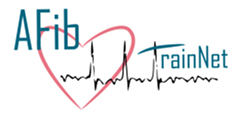Epicardial bi-atrial high-density contact mapping in horses - evaluation of ISK,Ca inhibition in persistent AF
Principal Investigators: Rikke Buhl and Thomas Jespersen
Study Directors: Merle Friederike Fenner (UCPH), Giulia Gatta (MU)
Background:
Small-conductance Ca2+-activated (SK) K+ channels, have lately been proposed as a possible atrial-selective target to pharmacologically terminate AF. However, it has been hypothesized that the importance of SK current and thereby the efficacy of ISK,Ca inhibition might be negatively related to AF duration and the extent of AF induced remodeling.
 Experimental approach:
Experimental approach:
Addressing the hypothesis of AF duration dependence regarding efficacy of ISK,Ca inhibition, the anti-arrhythmic properties of the ISK,Ca inhibitor NS8593 and its influence on atrial conduction were studied using high-density contact mapping in horses with atrial tachypacing induced persistent AF.
Results:
ISK,Ca inhibition by NS8593 has diametrically different effect on right and left atrial AF complexity and propagation properties in persistent AF. Despite global prolongation of AF cycle length, right atrial specific slowing of conduction led to increased anisotropy and lateral electrical dissociation, increasing AF complexity in the right atrium impeding successful cardioversion. On the contrary, overall AF complexity did not change significantly in the left atrium.
 Conclusions:
Conclusions:
SK channel inhibition by NS8593 leads to a global slowing of fibrillation frequency, as well as uni-atrial conduction slowing, without clinically affecting ventricular electrophysiology. The observed intra-atrial heterogeneity in response to ISK,Ca inhibition by NS8593, is hypothesized having created a pro-arrhythmic substrate preventing cardioversion of persistent AF in horses.
Funding:
This project has received funding from the European Union’s Horizon 2020 MSCA ITN under Grant Agreement No. 675351.


